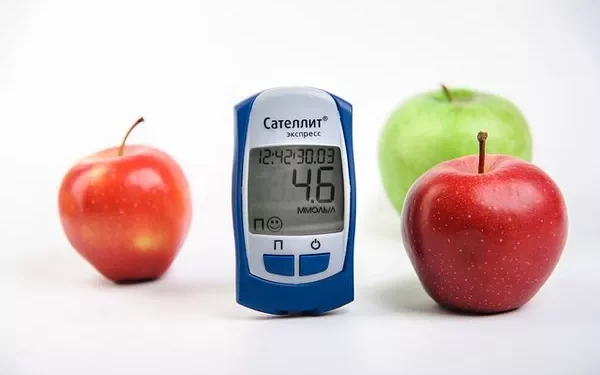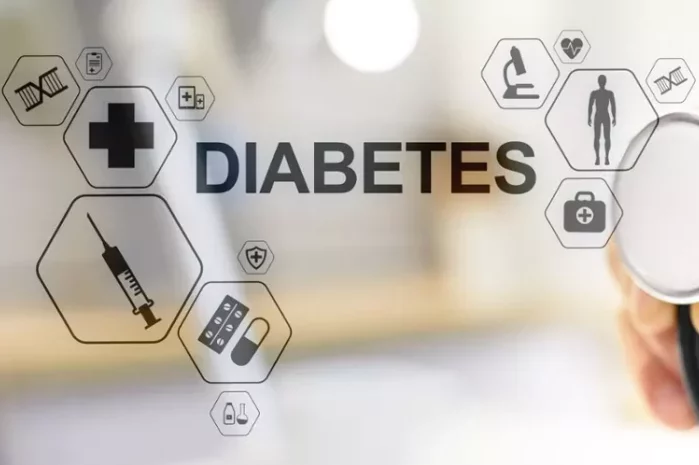Blood glucose monitoring is a cornerstone of diabetes management. It enables individuals to track their blood sugar levels, make informed decisions about their diet, exercise, and medications, and ultimately gain better control over their condition. As diabetes is a lifelong condition, regular monitoring allows individuals to identify trends, avoid dangerous highs or lows, and work collaboratively with their healthcare providers to adjust their treatment plans. But how exactly do blood sugar monitors work? This comprehensive guide will delve into the science behind blood sugar monitoring, the different types of monitors available, and how they function to help individuals manage their blood glucose levels.
What Is Blood Sugar Monitoring?
Blood sugar monitoring refers to the regular measurement of glucose levels in the bloodstream. For individuals with diabetes, managing blood sugar is crucial to preventing complications such as nerve damage, heart disease, kidney problems, and vision impairment. Monitoring blood sugar provides valuable data, helping to ensure that glucose levels stay within a target range and preventing potential hyperglycemia (high blood sugar) or hypoglycemia (low blood sugar).
Blood glucose monitors (often referred to as glucometers) are devices used to measure blood glucose levels. These devices come in various forms and use different technologies to provide a snapshot of glucose levels at any given time. Monitoring can be done through fingerstick tests, continuous glucose monitoring (CGM) systems, or even non-invasive technologies that are still in development.
The Importance of Blood Sugar Monitoring for Diabetes Management
For people with diabetes, blood glucose monitoring serves several key purposes:
Track Blood Sugar Levels: Frequent monitoring helps individuals keep track of their blood sugar throughout the day. By recording measurements at different times, patients can detect patterns and understand how food, activity, stress, medications, and other factors influence their glucose levels.
Prevent Complications: Chronic high blood sugar (hyperglycemia) or low blood sugar (hypoglycemia) can lead to long-term complications. Regular monitoring allows individuals to make adjustments in real-time to prevent these extremes.
Make Informed Decisions: Monitoring provides the information needed to make decisions about insulin doses, carbohydrate intake, and other aspects of diabetes management.
Improve Treatment Plans: Blood sugar monitoring results can be shared with a healthcare provider, allowing for more personalized and effective treatment adjustments based on real-time data.
How Do Blood Sugar Monitors Measure Glucose?
Blood glucose monitors generally rely on electrochemical, optical, or mechanical methods to measure glucose levels. The most common method, used by traditional glucometers, is electrochemical sensing. Let’s explore how this works in detail.
Electrochemical Glucose Monitoring
Electrochemical glucose meters are the most widely used blood glucose monitors. These devices work by measuring the electrical current generated when glucose in the blood sample interacts with a chemical enzyme on a test strip. The steps involved are as follows:
Sample Collection: A small sample of blood is obtained by pricking the fingertip (or other site, depending on the device) with a lancet.
Reaction with Enzyme: The blood sample is applied to a test strip that contains an enzyme called glucose oxidase (or sometimes glucose dehydrogenase). These enzymes specifically react with glucose.
Oxidation of Glucose: When glucose in the blood sample interacts with the glucose oxidase enzyme, it undergoes oxidation, producing hydrogen peroxide as a byproduct.
Electrical Signal: The hydrogen peroxide produced generates an electrical current when it reacts with the electrodes embedded in the test strip. The amount of current is directly proportional to the amount of glucose in the blood sample.
Conversion to Digital Readout: The electrical current is then converted into a numerical value, representing the glucose concentration in the blood, typically in milligrams per deciliter (mg/dL) or millimoles per liter (mmol/L).
This process takes only a few seconds, making electrochemical blood glucose meters fast and efficient. These devices are typically compact, affordable, and widely accessible, making them the go-to option for most individuals with diabetes.
Optical Blood Sugar Monitors
Optical blood sugar monitors use light to detect glucose levels in the blood. While this technology is still in development and not as commonly available, it holds promise for non-invasive glucose monitoring. There are two main types of optical sensing techniques being researched for glucose monitoring:
Near-Infrared Spectroscopy (NIR): NIR uses infrared light to penetrate the skin and detect glucose levels in the interstitial fluid (the fluid surrounding the cells). By shining light on the skin and measuring the absorbance or scattering of the light, the device can estimate glucose concentrations. The challenge with this method is that the amount of glucose in interstitial fluid is typically much lower than in blood, requiring highly sensitive equipment to detect small variations.
Raman Spectroscopy: Raman spectroscopy is another optical technique being explored. It involves shining laser light on a skin surface and measuring the scattered light. Glucose molecules interact with the laser light and cause characteristic changes in the light’s frequency, which can be analyzed to estimate glucose levels.
These optical technologies have the advantage of being non-invasive, as they don’t require blood samples. However, they are still being refined and are not yet as widely available or reliable as electrochemical methods.
Non-Invasive Monitoring Methods
In addition to optical technologies, researchers are exploring other non-invasive ways to monitor blood glucose. These include:
Transdermal Sensors: These devices use small electrical currents or electromagnetic fields to extract glucose molecules from the skin without drawing blood. These glucose molecules can then be measured and analyzed.
Saliva and Sweat Monitoring: There is growing interest in using saliva or sweat to monitor glucose levels. Since glucose is present in these fluids, it may be possible to use sensors that can detect its concentration. However, these methods are still in the experimental stages and have not been fully proven for accurate glucose monitoring.
Wearable Sensors: Wearable devices, such as continuous glucose monitors (CGMs), are already gaining traction. These devices measure glucose levels continuously through sensors that are placed under the skin and transmit data to a receiver or smartphone. While CGMs still require a small amount of interstitial fluid (not blood), they offer continuous monitoring and have revolutionized diabetes management.
Types of Blood Sugar Monitors
Blood sugar monitors come in different forms, each with specific features and benefits. The most common types are:
Traditional Glucometers
Traditional glucometers, also known as blood glucose meters, are handheld devices that use test strips and lancets to measure blood glucose levels. These devices require users to apply a small blood sample to a test strip, and the glucose level is displayed in seconds. Some key features include:
Affordability: Traditional glucometers are widely available and relatively inexpensive.
Ease of Use: The devices are generally user-friendly, requiring only a small blood sample and minimal steps to get a result.
Portability: Most traditional glucometers are compact, lightweight, and easy to carry, making them suitable for daily monitoring.
Continuous Glucose Monitors (CGMs)
Continuous glucose monitoring systems offer real-time, continuous tracking of glucose levels throughout the day and night. These systems involve a sensor inserted just under the skin (typically in the abdomen or upper arm), which measures glucose in the interstitial fluid. CGMs offer several advantages:
Real-Time Data: CGMs provide continuous glucose readings, allowing users to detect fluctuations in blood glucose levels that may go unnoticed with traditional glucometers.
Alerts: Many CGMs can be programmed to send alerts when blood sugar levels fall outside of a specified range, helping to prevent both hypo- and hyperglycemia.
Reduced Fingerstick Tests: While CGMs still require occasional calibration with fingerstick tests, the need for frequent blood draws is significantly reduced.
CGMs are typically more expensive than traditional meters but are invaluable for individuals who need tight control over their blood sugar levels, such as those with Type 1 diabetes or individuals on intensive insulin therapy.
Flash Glucose Monitors
Flash glucose monitors are a hybrid between traditional glucometers and CGMs. These devices use a sensor inserted under the skin to measure glucose levels continuously, but unlike CGMs, they require users to “scan” the sensor with a reader or smartphone to obtain glucose data. Key features include:
Convenience: Users can obtain glucose readings by scanning the sensor with a handheld device, eliminating the need for frequent blood draws.
Affordability: Flash glucose monitoring systems are often more affordable than full CGMs, but still provide continuous data.
Shorter Wear Time: Flash glucose sensors are typically worn for 7-14 days before needing to be replaced.
How Accurate Are Blood Sugar Monitors?
The accuracy of blood glucose monitors is critical for proper diabetes management. In general, most modern glucometers and CGMs are fairly accurate when used according to the manufacturer’s instructions. However, factors that can influence accuracy include:
Improper Use: Failure to follow the device’s instructions for cleaning, calibration, or test strip handling can lead to inaccurate readings.
Environmental Factors: Extreme temperatures or humidity can affect the accuracy of some meters.
Interference from Other Substances: Certain medications, high cholesterol, or other substances in the blood can sometimes interfere with test results, particularly in older or less advanced devices.
Sensor Calibration: For CGMs, proper calibration is necessary to ensure accurate readings. Calibration errors can lead to discrepancies between the CGM data and fingerstick tests.
In recent years, advances in technology have significantly improved the accuracy of these devices, but users should still regularly verify readings with traditional fingerstick tests when necessary, particularly when blood glucose levels appear to be inconsistent or outside the target range.
Conclusion
Blood glucose monitoring plays a crucial role in managing diabetes, allowing individuals to track their blood sugar levels, avoid dangerous highs and lows, and make informed decisions about their treatment. While traditional glucometers remain the most widely used, continuous glucose monitors and other innovative technologies are revolutionizing diabetes management by providing real-time, continuous data with minimal disruption to daily life. Whether through electrochemical, optical, or other future methods, blood sugar monitors continue to evolve, offering people with diabetes more options to stay healthy and in control of their condition.
By understanding how these devices work and how to use them effectively, individuals with diabetes can gain a better understanding of their disease, improve their management strategies, and reduce the risk of long-term complications. Regular blood sugar monitoring, combined with lifestyle modifications and medical guidance, is a critical tool for maintaining optimal health and well-being for those with diabetes.
Related topics:
What’s Normal Fasting Blood Sugar Range



























